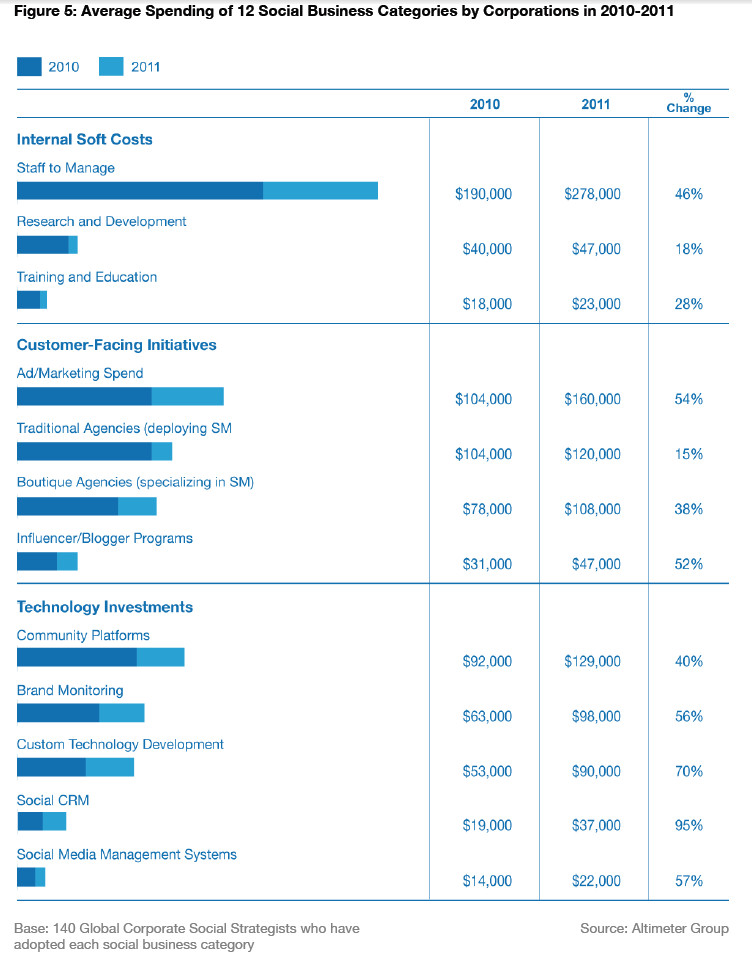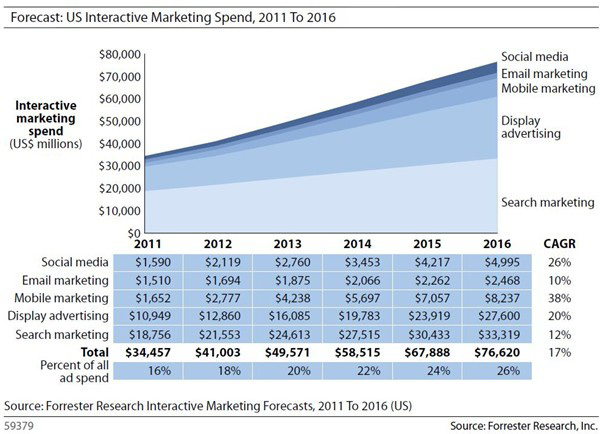3 Reasons your CMO should sign off on a Large Social Business Budget for 2013
“This is now a continuous feedback kind of world, and we need the organizational nimbleness to respond.” CEO, Financial Markets, United States.
(from IBM’s 2012 CEO Survey)
Times have changed, there is no doubting that. Not only do we need to reach out to consumers in new ways, we must now include a social element in the way we conduct every aspect of business.

‘Going Social’ means you need to start thinking about the organizational ecosystem as a whole, not the free-standing silos that plague most companies now. Social media impacts the entire organization. This is a good thing, because properly constructed and executed, it has the ability to help grow the organization internally and externally as well. (from The Top Four Trends Shaping Social Enterprise in 2013, Beverly Macy, 10/23/2012)
It is that time of the year again: the time to construct marketing budgets for next year. Enterprises should be working on finishing touches for 2013 marketing Budgets. It is hard to believe that some corporations are still on the fence about whether or not Digital Marketing can produce enough ROI to portion off a decent amount of the budget towards it. If there is still hesitance about singing off on a large Social Business budget for your 2013 Marketing Plan, here is some evidence to consider…
1. Everybody (meaning… your competition) is doing it.
“Every company, across every business operation, is looking to tap into the power of social networking to transform the way they work, collaborate and out innovate their competitors,” said Alistair Rennie, general manager, social business, IBM.
Reputation Management, Crisis Control, Consumer Relationship Maintenance – there are numerous angles to consider in your social strategy and there is only one wrong way to approach it: to not have one. The less effort and money you put into your digital marketing strategy, the more your business will start to fall off the forefront of its industry, no matter the type.
IBM’s 2012 CEO Survey revealed that 57 percent of CEO’s identified social business as a top priority and more than 73 percent are making significant investments to draw insights into available data. (From IBM Defines Social Business With Real-Time Analytics by JP RASTRULLO SEPTEMBER 12, 2012)
“Eighty-seven percent of business-to-business (B2B) marketers now spread their message through social media, according to a new report from the Content Marketing Institute (CMI).” (from Social Media Marketing Ranks As B2B Marketers’ Most Popular Tactic, James Dohnert, October 25, 2012)
2. Consumers are already there.
There are over one billion Facebook users.
The shocking point in conjunction with that statistic is that Facebook is only a very small portion of the entire social media realm you must consider as part of your marketing strategy. The statistics are there to back the fact that people are using social sites to make their decisions.
Think beyond Facebook for social media. While Facebook is too large to ignore as a marketing platform, it’s not as effective as other social media options for converting to sales. Specifically, research by Shop.org, comScore, and The Partnering Group found that 70 percent of consumers click through on a retail blog to the firm’s website and 68 percent of consumers use YouTube to browse and research products. Further, consumers follow more brands on social media platforms other than Facebook. (from 7 Social Media Tactics Your 2013 Budget Needs to Succeed [Research], Heidi Cohen, August 20, 2012)
3. Social is the Future
A recent IBM study of more than 1,700 chief marketing officers reveals 82 percent plan to increase their use of social media over the next three to five years. (from IBM Defines Social Business With Real-Time Analytics by JP RASTRULLO on SEPTEMBER 12, 2012)
In fact, it is the present and will only continue to grow in the future. But you’re running out of time to get on board. Now is the time.
US advertisers are expected to spend nearly $77 billion on interactive marketing by 2016 – as much as they now spend on TV – according to a new report by Forrester Research: By 2016, search, display, mobile, email, and social media together are expected to constitute 26% of all ad spending, up from 16% in 2011. (from Important Charts to Consider When Planning Your Marketing Budget in 2013 – By Osanda Cooray on October 12, 2012)
This is only the beginning. Social Business has leaked its way through the cracks of the entire globe, crossing cultural boundaries and providing enterprises opportunities like never before. But understanding how it works is a must. If you have accepted digital marketing, you are only one [major] step into the equation. The next steps involve structuring, measuring, monitoring, training, and results.
The true social enterprise is so far beyond marketing, it isn’t even funny. The social enterprise means Finance, Human Resources, Operations, Communications, Customer Service, Information Technology, Sales, and then Marketing are affected. Social media activities need to support the business strategy. Audit Social media marketing and social customer service for best practices and lessons learned. They’ve been at it longer than the rest of the organization and can offer valuable insight. (from The Top Four Trends Shaping Social Enterprise in 2013 by Beverly Macy – 10/23/2012)
Marketing plans should consist of a cocktail of both outbound and inbound elements. Building the Social Enterprise takes time and careful strategy. There is no better time to start planning for this crucial aspect of your business future.
But it doesn’t stop there.
Cross-functional social teams need to construct the new social architecture. This includes establishing policies and procedures, rules of engagement, communications, education, monitoring, and departmental integration. (from The Top Four Trends Shaping Social Enterprise in 2013 by Beverly Macy – 10/23/2012)
Education is the keyword there. Once the concept of social is in place, there are numerous other considerations. If this is just the beginning of your social voyage, training is a must for the key players in the company involved in your social business plans, if not for the entire company.
“All employees must be exposed to basic social media training and education to attain a knowledge baseline in the organization.”
(from The Top Four Trends Shaping Social Enterprise in 2013 from Beverly Macy – 10/23/2012)

About Lauren Formalarie
Lauren Formalarie is a Project Manager and Trainer at SayItSocial, focusing on digital marketing strategy and project development as well as live, virtual and eLearning training initiatives.

Like What You Are Reading? Subscribe To Read More
Join our mailing list to receive the latest news and updates from our team.





























